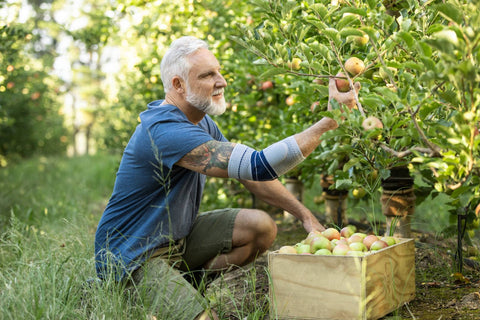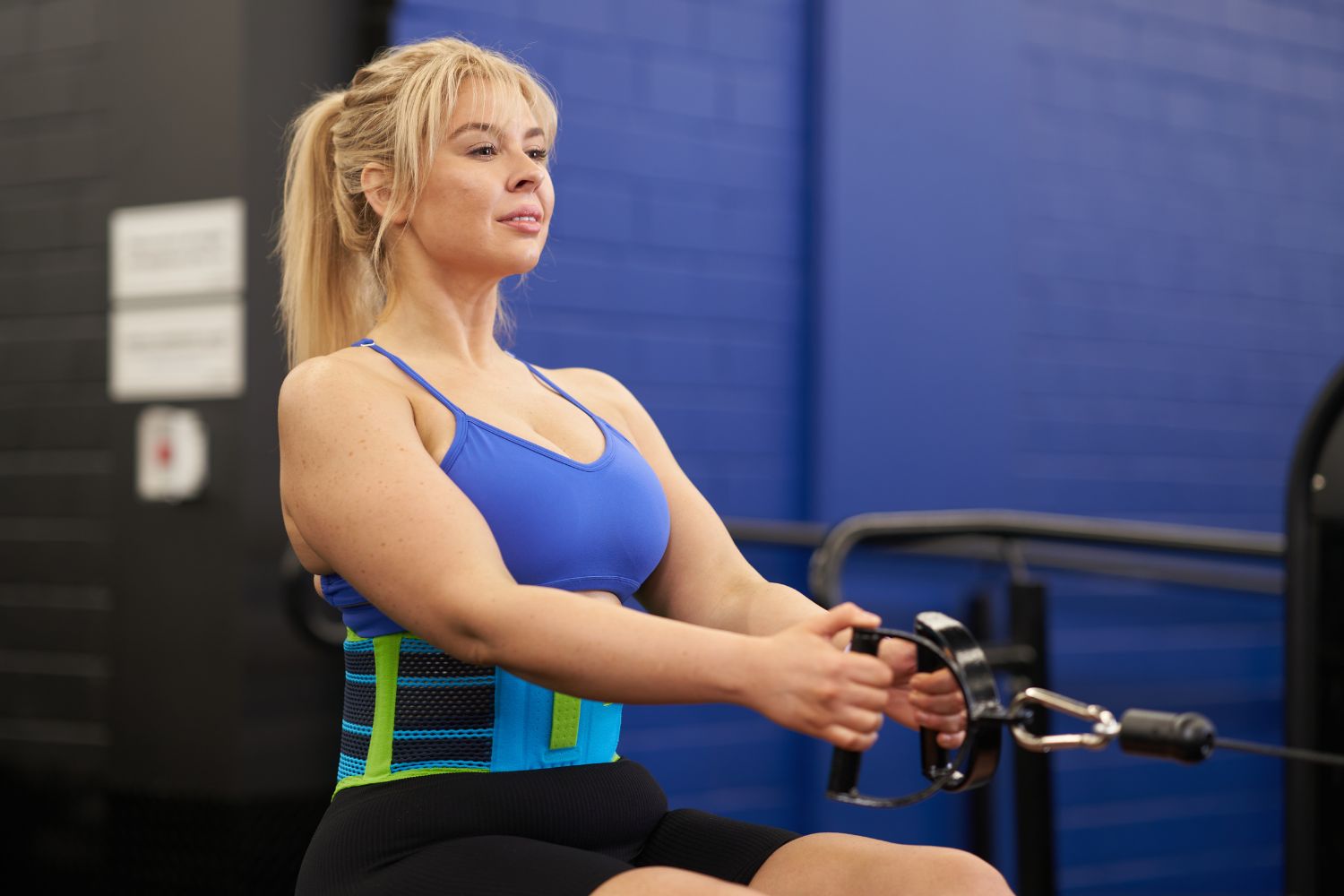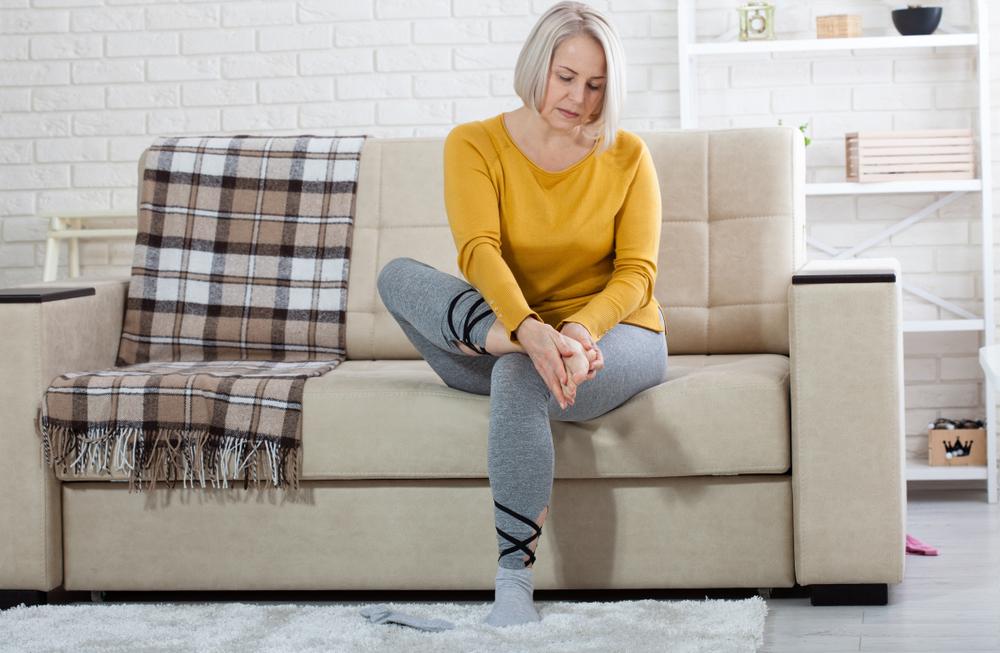How does an elbow brace work? How do you wear one? What can it treat? Elbow injuries aren't quite as common as those in the knees and ankles, but the joint is still prone to overuse and even some medical conditions like arthritis. So, as bracing is a crucial step in pain relief and injury recovery, we thought we’d answer some of the most commonly asked questions about elbow braces.
1. How do elbow braces work?

EpiTrain
Elbow braces work by compressing and stabilising the joint. Doing so relieves pressure on overworked, injured, or otherwise painful areas. Our EpiTrain, for instance, uses medical-grade compression knit and silicon pads to:
- Activate your muscles so they can better support the joint. Pain and swelling often disrupt the nerve signals between your muscles and brain, meaning your muscles can’t function as well as they can to protect tendons and other delicate structures. But by communicating with the nerves, compression knit helps circumvent that.
- Boost blood flow around the injured area. Damaged tissues need a steady supply of oxygen and nutrients to heal. While your body will automatically send these in spades in the first stages of injury, it does tend to go overboard, causing excess swelling. Old, deoxygenated blood can’t get out, and new oxygen and nutrient-rich blood can’t get in fast enough. By gradually compressing the area, the EpiTrain squeezes the blood out of congested surface veins and up to the heart, improving circulation.
- Reduce swelling. Along with reducing congestion in your veins, compression knit reduces the formation of edemas (your body’s anti-inflammatory agents).
- Relieve pain. With the stabilisation and support that compression knit offers, there will be less pressure on painful areas. Additionally, the silicon pads sewn in at the lateral and medial sides of the elbow will massage those areas, actively relieving pain.
Learn more: #MaterialMatters: Types of medical grade compression and how it helps your recovery
2. What can I use an elbow brace for?
The simple answer is protection against injury, injury recovery, and pain management. The more complex answer is that there are a few elbow brace types, all of which are better suited for different things.
- Compression braces like our EpiTrain are great for recovering from elbow tendonitis and reducing your risk of getting the condition again. The compression fabric supports the injured tendons, and the silicon pads are sewn over the affected areas. It can also be great for mild arthritis (and moderate if you throw in the additional support strap). The knit and pads will help you manage the pain, swelling, and stiffness associated with the condition.
- Hinged and other rigid braces are best for severe injuries like a ULC tear or an elbow fracture. Unlike a compression brace, they’ll limit the joint's movement, which is necessary for a torn ligament to heal and a broken bone to set.
- Sports compression elbow sleeves, meanwhile, are best used for injury prevention and sports performance. Activating and boosting blood flow to the muscle will help your muscles better support the joint and be slower to fatigue.

Sports Elbow Support
3. How long should you wear an elbow brace?
It depends on what you’re using the brace for.
- For protection against injuries like Tennis Elbow and Golfer’s Elbow, you should wear the brace while you’re training, warming up, playing a sport, and cooling down. Bracing will be especially important if your preferred physical activity involves a lot of hand and arm movements.
- For managing medical conditions like elbow arthritis, we recommend wearing the brace as much as possible, especially during the day. That way, you’ll avoid the joint pain and swelling associated with the condition. Unfortunately, arthritis is a long-term condition, so be ready for long-term wear.
- For injury recovery, that depends on its severity and how quickly your body bounces back from it. For a mild UCL sprain, it might be a couple of weeks. For severe, recurring Tennis Elbow, it might be a few months. Remember: just because your elbow feels fine doesn’t necessarily mean it is. So, as well as monitoring your pain levels, speak to a specialist.
4. How do you put on an elbow brace?
For the EpiTrain and Sports Elbow Support, turn your arm so your palm faces outward. Carefully pull the brace up (label end first) until the coloured lines sit on your forearm and the epicondyles (bony protrusions on the insides and outsides of your elbow) are square in the cutouts of the silicon pads. See our donning video for more details:
You’ll need to follow the manufacturer’s or your physio’s instructions for hinged braces.
5. Are expensive elbow braces really all that different?
This is a complicated question. Yes, quality braces will cost more. No, price doesn’t automatically dictate quality. And yes, if you want a good brace, you’ll need to aim for a quality product, and that often means investing a bit more money than what you would buying off a typical pharmacy or sports store shelf.
We’ve been making braces for nearly a century and compression knit even longer. So, to us, a good brace means:
- Quality materials
- Perfect sizing
- Rigorous testing
As long as a brace has that, it will support your joint as it should and be comfortable to wear. Cheaper alternatives like neoprene braces are often mass-manufactured into limited sizing options, meaning they won’t provide adequate support. Not to mention, neoprene isn’t particularly breathable. So especially for long-term injuries and conditions, it won’t be a viable option.
6. Bonus: What else should I do besides bracing?
Whether you’re trying to protect your elbow from injury, recovering from injury, or managing elbow arthritis, aim to do strengthening and stretching exercises. These will keep your muscles strong and flexible, all the better to protect the joint.
If you have an injury or arthritis, always seek specialist advice. You should also closely monitor your pain levels and avoid activities that aggravate your symptoms too much.
For sprains and tendonitis, rest, ice, and elevate the joint. This will help curb further damage and swelling. And for arthritis, a heat pack can go a long way to relieving muscle stiffness.
To sum up
A brace’s fabric, padding, and straps stabilise the joint and promote healing. So, pulling on an elbow brace is an excellent way to protect yourself from injury, recover from tendonitis and sprains, and even manage chronic conditions like arthritis. But to make the most of your brace, use it alongside other protection and recovery methods. RICE, specialist advice, and a good exercise routine are crucial.
If you require assistance selecting the right product for your needs or wearing the brace, call us on 098015660 or contact us via live chat.
Do you have private health? Most private health extras will cover Bauerfeind Products. Check to see if yours is included. Bauerfeind Private Health Insurance Inquiry.
















